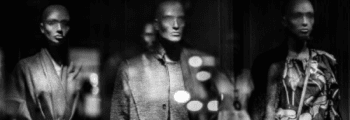600 B.C

The first recorded rhinoplasty procedures performed in ancient India to cover wounds by using the skin cultivated from the cheek.
1880-1900

Rhinoplasty hits America. Those seeking to improve socially undesirable features such as large noses, weak jawlines, or any features that did not conform to contemporary ideals of that time. Advances were made in open and closed techniques, reducing the size and structure of the nose to improve pug noses and humps, as well as using biomaterials and developing implants to treat saddle noses.
1920s-1930s

Actors and actresses used rhinoplasty to help fit the mold of old Hollywood beauty standards. Men and women were seeking nose jobs to make them indistinguishable to other Eurocentric Americans.
1940-1980s

The sought-after rhinoplasty look was a shapely skinny nose that was narrow, dipped in the middle, and ended with a miniaturized upturned tip that resembled a ski slope.
1980-90s

Rhinoplasties became really popular in the 1980’s, there were some pioneering surgeons and good techniques, but a subtle change or natural result was not always part of the plan. People were seeking a one-size-fits-all standard of beauty despite it not working for their own appearance. The focus was primarily on making the nose smaller.
1990s

A shift in what is considered beauty is broadened. People began requesting minimal alterations to preserve the overall characteristics of the original nose by making small alterations to straighten or refine the nose’s shape.
2000s

As an alternative to surgery, minimally invasive cosmetic enhancements like Botox and dermal fillers made nose augmentation even more popular. Fillers like BOTOX® and JUVÉDERM® and help correct asymmetry in the nose. Fillers also allow individuals to “try before they buy,” letting them evaluate their results to see whether they want to proceed with rhinoplasty.
2010

Individuality is the new standard of beauty. Embracing your uniqueness, appearance, and heritage. More and more people are seeking ethnic rhinoplasties to subtly adjust the shape and size of the nose while preserving your natural ethnic characteristics.
Present Day

Waleed Ezzat, M.D., F.A.C.S. is double board-certified in facial plastic and reconstructive surgery and otolaryngology/head and neck surgery and specializes in cutting-edge techniques in facial aesthetic surgery geared toward producing natural-looking results. Dr. Ezzat believes that all cosmetic procedures should enhance the appearance of the face – not completely alter it. Just as every individual’s face is distinctive and complements the rest of the body, Dr. Ezzat committed to providing a patient-centered, specialized approach to facial plastic and reconstructive surgery. Because no two faces are alike, Dr. Ezzat spends time with each patient to develop a tailored approach to improving aesthetics and function.




